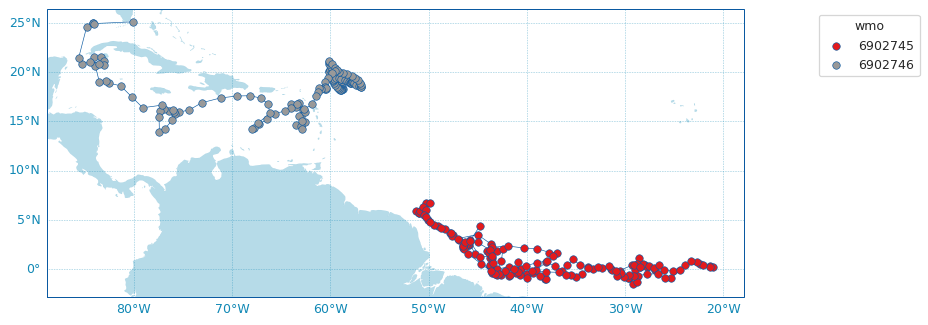The packaging should be relatively straight forward.
The refactor may be slightly more tricky, though your current codes to fetch argo data will be a big help.
Currently the user has to define many things for the OWC toolbox to run:
For the update salinity mapping, they need to define:
- Which data set they want to use from each WMO box (argo/CTD/bottle data) [though we have discussed how the WMO boxes could be phased out!]
- The float name they want to analyse
- The maximum number of historical casts they want to use during analysis
- Whether or not they would like to use potential vorticity
- Whether or not they would like to use special constraints around the subantarctic front
- The latitude and longitude scales used for decorrelation (4 values)
- The cross isobath scales (2 values)
- The age scales (2 values)
- The exclusion depth
- The age exclusion parameter
Many of these parameters have a default value, but I know operators change them regularly
That brings variables for salinity mapping to 15, which is somewhat tricky to manage in a usable way. Either we will need to group some of these variables together (into classes or dictionaries?), OR we can split the update salinity mapping routine up into separate routines that can be called?
For calculate piecewise fit (which I have not pushed to master yet, as I'm still working on some bugs) users need the output from the salinity mapping routine, plus:
- Number of breaks in the fitting line
- (Optional) where to place these breaks
- (Optional) the boundaries for potential temperature (two values)
- (Optional) The boundaries for pressure (two values)
You can see an example of the set up here: https://github.com/ArgoDMQC/matlab_owc/blob/master/matlab_codes/set_calseries.m

For standard users of the software, they should not need to clone the repository to be able to run it, but rather simply install it using pip or conda. This implies 2 things:
This is also to let you known that when this will be ready to publish euroargodev python softwares on pypi, I created a euroargodev account at https://test.pypi.org/user/euroargodev/ and https://www.pypi.org/user/euroargodev/ (don't be fulled by the picture, this is retrieved automatically from my email but will change soon, so that it is the EA logo).